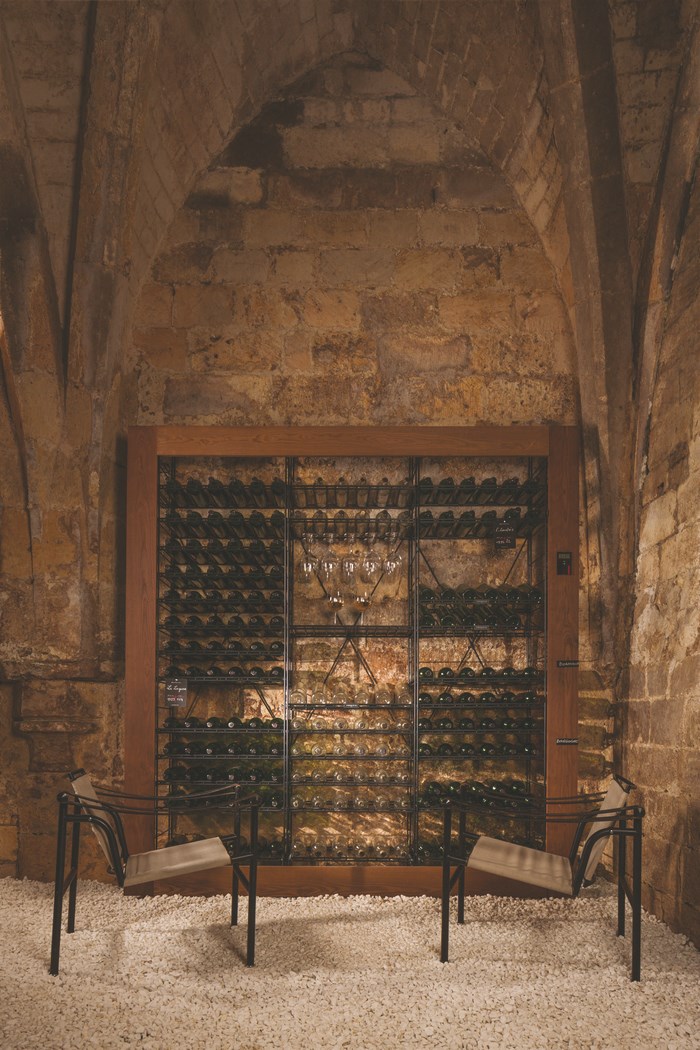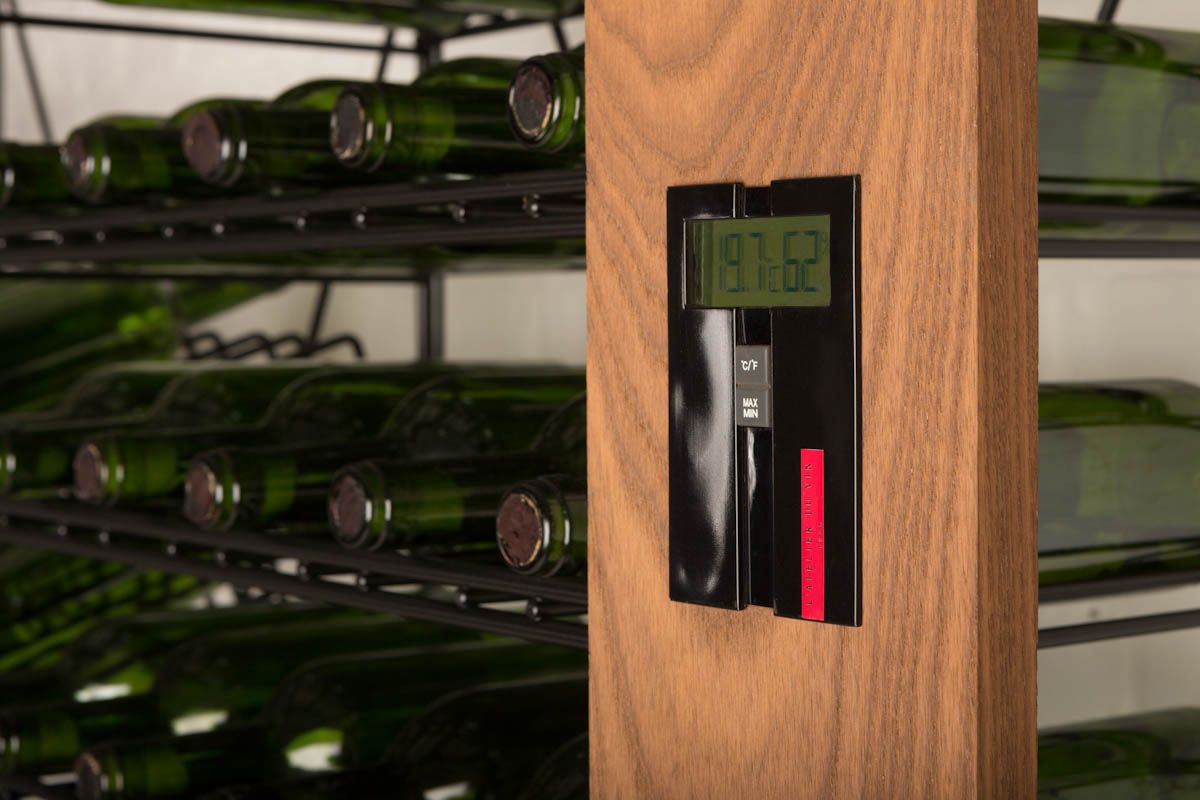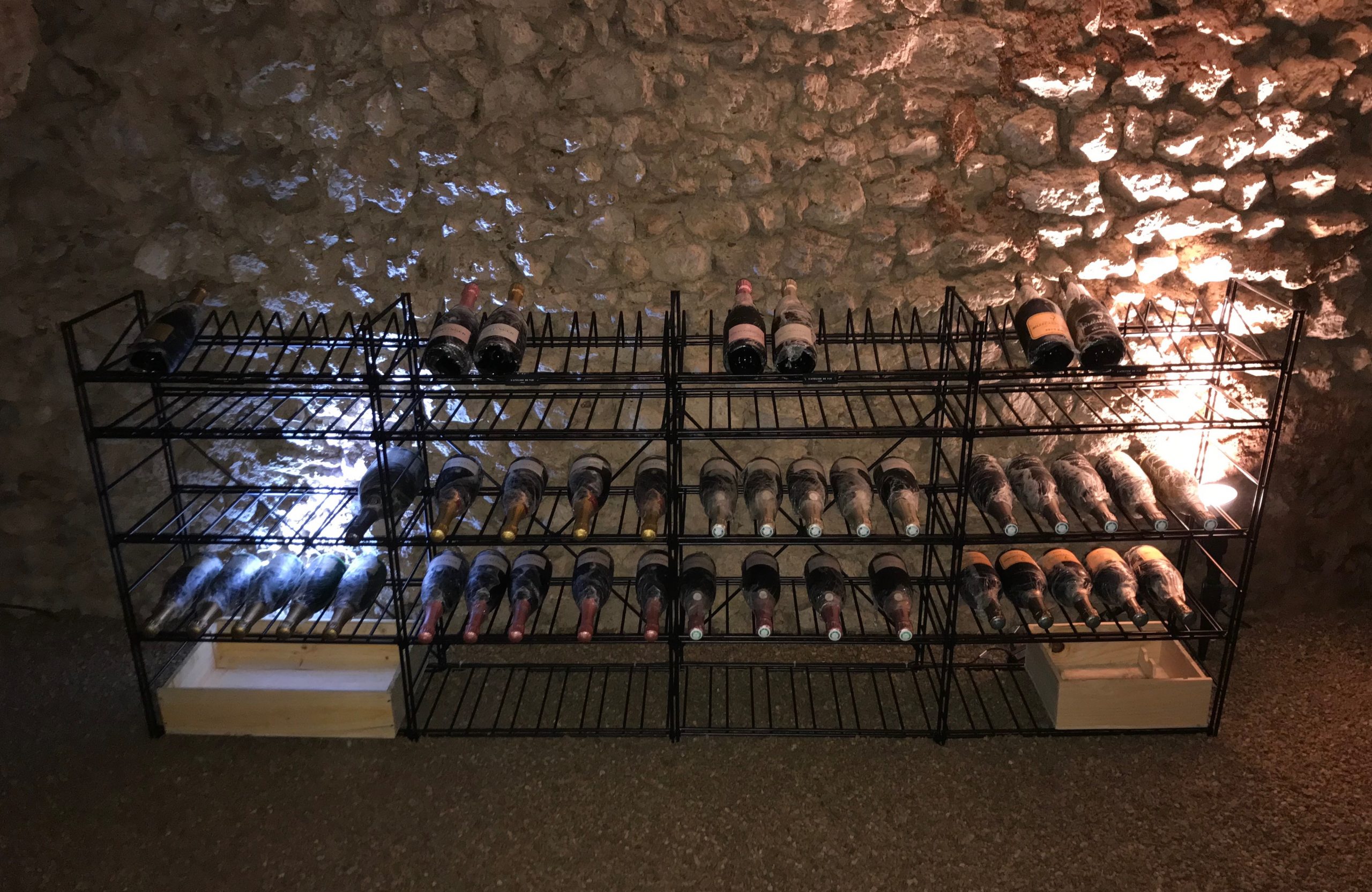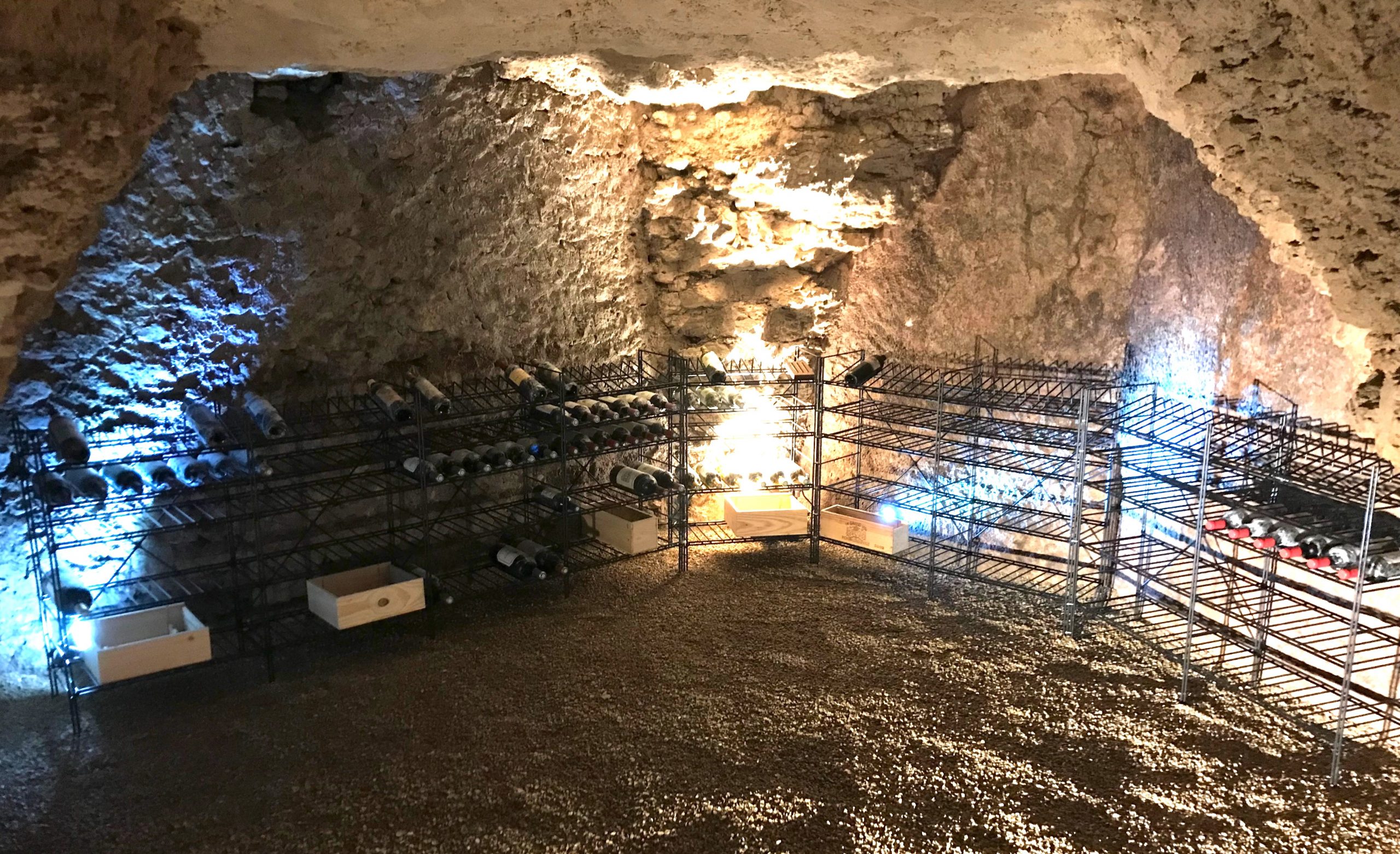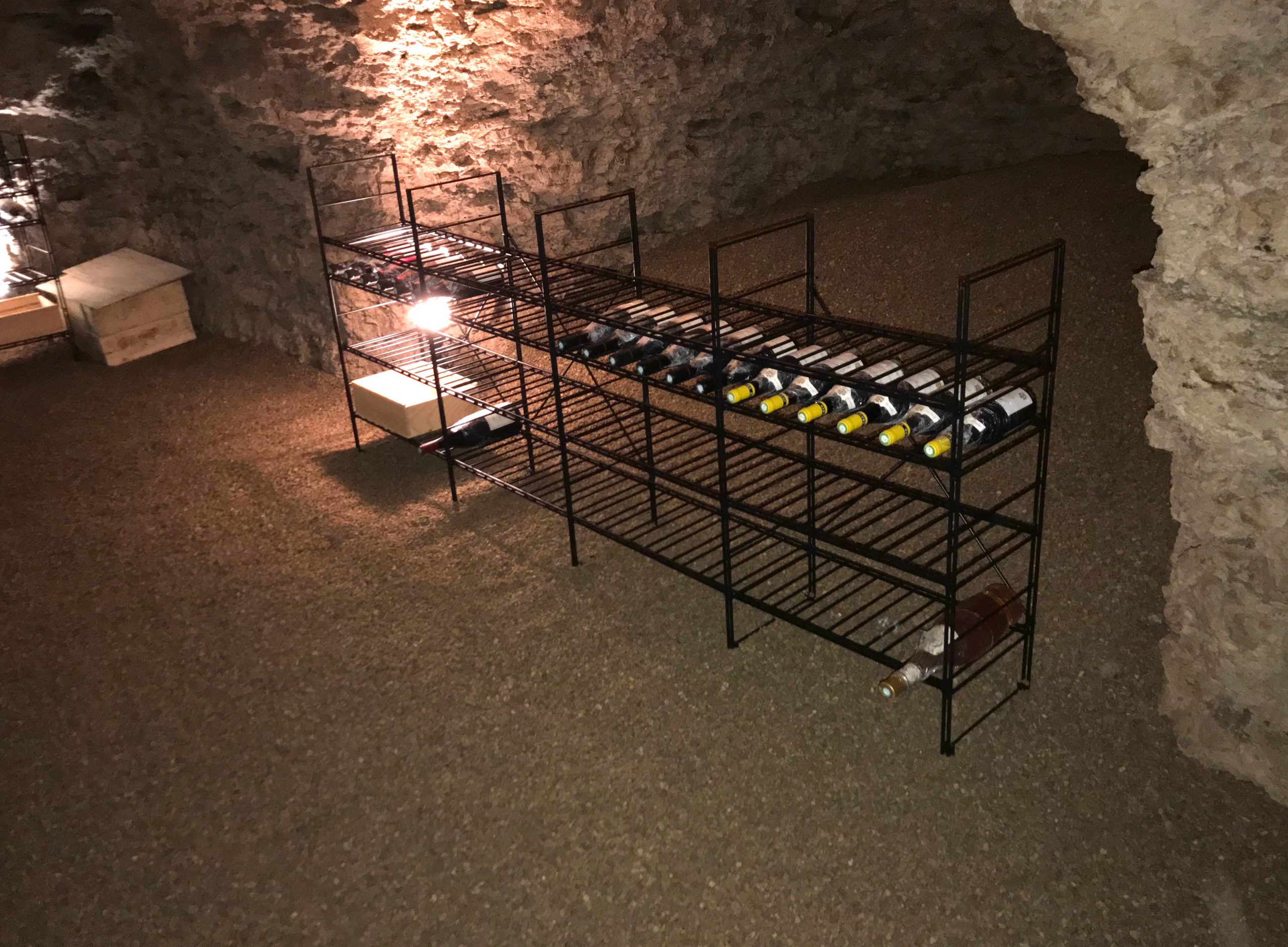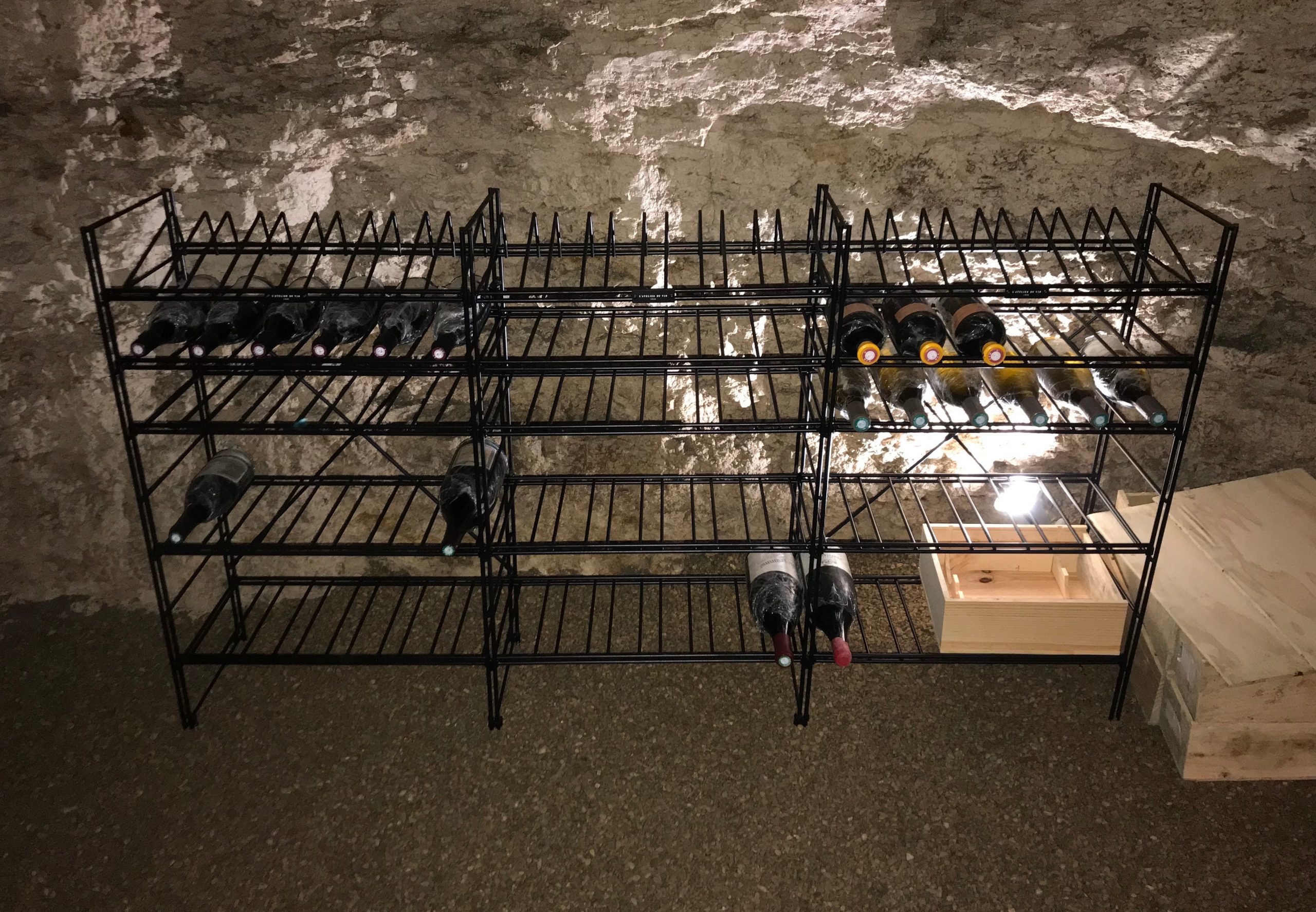How to Dehumidify a Wine Cellar
What should you do if your wine cellar is too humid? How do you know if the moisture levels are too high for storing wine? What causes humid air in a cellar and how can you fix it?
This complete and detailed guide, by Architecture Intérieure du Vin, explains how to dehumidify a wine cellar effectively and prevent humid air from damaging your wine collection.
Our team of experts design, produce and fit wine storage spaces and custom-made wine furniture, as per your needs, requirements and desires.
Humidity, a Key Factor for Optimal Wine Preservation
Humidity levels need to be just right to preserve promising grands crus or fine wines in optimal conditions; neither too high, nor too low. Controlling or measuring the humidity in the air is essential for properly preserving bottles and ensuring that they age well in the long term.
What Is the Ideal Humidity Level in a Wine Cellar
Whether in a personal or professional wine cellar, the humidity level in the air should be constant, between 60% and 70%. This percentage refers to the relative humidity. If the rate exceeds 75%, you need to dehumidify your wine cellar as soon as possible, so as to not damage your wine. The ideal humidity level for preserving wine should be higher than that recommended for living spaces, but less than 75%.
How Does Humidity Affect Wine Bottles?
High humidity levels in the air can have negative, or even irreversible, effects on wine. Excess moisture can lead to the proliferation of fungi and mould in corks, which would directly contaminate your bottles and make the wine unfit for consumption.
Beyond wine preservation, humid, stale or poorly ventilated living or work areas can also cause respiratory problems, which is why indoor humidity issues should not be taken lightly.
How to Measure Humidity Levels in a Wine Cellar
Hygrometers measure the amount of water vapour in the air, so that you can check the humidity levels in your wine cellar in real time. They come in all shapes and sizes with a dial or digital screen, and use different mechanisms (dew-point hygrometer, capacitive hygrometer, etc.). A hygrometer measures the relative humidity level (between 0% and 100%) and, sometimes, the absolute humidity level (in grams of water per cubic metre of air). More specifically, most of these devices measure the dew point, i.e., the humidity threshold at which the water vapour present in the air condenses in the form of droplets on the walls. Remember, humidity levels in the air should remain between 60% and 70% for wine bottles. If the levels go above this percentage, you need to dehumidify your wine cellar.
What Other Factors Are Linked to Humidity?
Ideal wine storage conditions combine several criteria, each one is inseparable from the last. Humidity is directly linked to the quality of the air, temperature, ventilation and lighting in the wine storage and ageing area.
Know How to Anticipate or Identify Humidity Problems in a Wine Storage Space
The saying, “better safe than sorry”, can be applied to both life and oenology! Before you reach the point of no return and have to dehumidify your entire wine cellar, you can look out for the first signs of humidity and even anticipate them. Here are some expert tips from Architecture Intérieure du Vin to avoid high humidity levels.
What Are the Signs of a High Humidity in a Wine Cellar?
There are several tell-tale signs. Condensation drops or patches on the walls, cabinets or bottles, all indicate that the air is too humid. The appearance of mould, saltpetre or bad smells also point to a potential humidity issue. Finally, trust your intuition! If you walk into your wine cellar and get an abnormal sense of dampness (or dryness) on your skin or when you breathe, check the humidity levels with a hygrometer.
What Causes High Humidity in a Wine Cellar?
Wine cellars don’t become too humid without reason. Humidity can come from the indoor or outdoor air, the floor, the ceiling, the walls or even products and goods in your wine storage space. In other words, a humidity problem can come from the cellar walls or the air circulating within.
- If the walls, floor or ceiling are damp, you may have an issue such as a leak or burst pipe. A rise in humidity could also be due to the infiltration of rainwater through a crack in the roof or outer walls. Similarly, if your wine cellar is underground, the presence of a nearby river, lake, swimming pool, well or phreatic table, combined with poor insulation, could result in damp walls, floors or ceilings. Heavy rainfall or flooding could have the same effects and is less predictable.
- If the air coming into your wine cellar is humid, your storage space may be too close to a damp room (bathroom, kitchen, utility room, indoor pool, jacuzzi, hammam, etc.). Humidity levels may also rise occasionally due to damp objects or products: buckets of water, basins, tanks, wet clothes, soaked dishes, watered houseplants, or other containers filled with liquid. Finally, damp air or water may also have infiltrated your ventilation system.
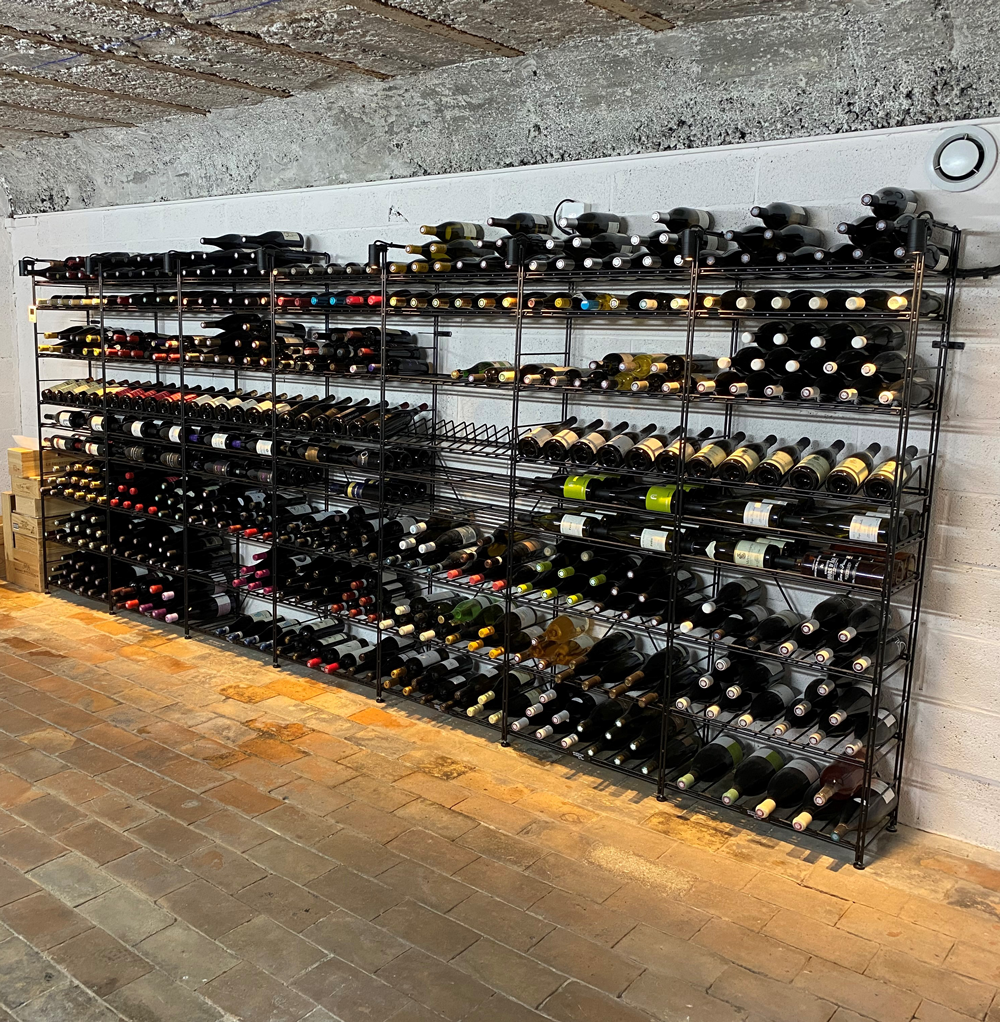
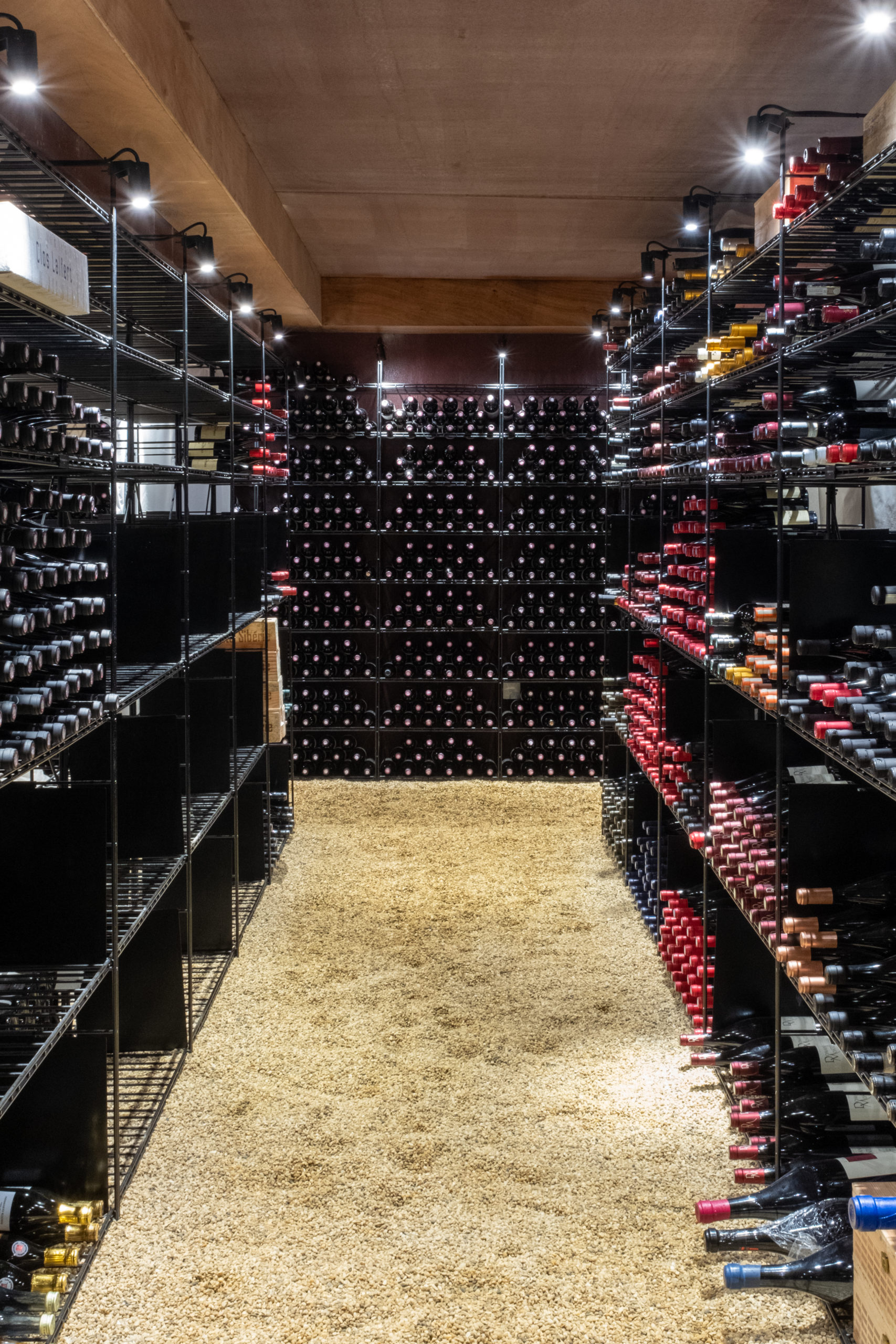
How to Prevent Humidity Problems in a Wine Cellar
To prevent humidity, you need to get to identify any potential causes and factors before the effects appear. Of course, you should never store food or smelly products in or near a wine cellar. Even when a bottle is closed, the wine can breathe through the cork and thus be contaminated by bad odours, which would impact the balance of its aromas. Avoid storing cardboard or paper in this space too, as it will rot!
The first step is to think carefully about where to fit your wine cellar in your home or business place to minimise the risk of water damage, seepage or humid air.
Next, choose the right materials when building and fitting your wine cellar. Add a layer of gravel or river sand on the floor to absorb any excess moisture and prevent vibrations (wine needs a still environment).
For the walls, ceiling and doors, make sure to insulate them properly and protect the walls and partitions with water-repellent plaster, such as lime, to protect your wine collection from leaks and infiltrations. Finally, set up a gentle ventilation and air-conditioning system, specially designed for wine cellars, to control and regulate humidity and temperature levels (hygrostat and thermostat) in real time.
Finally, keep your wine cellar clean, but avoid using strong detergents and scented or perfumed chemical products, which could contaminate your wine.
How to Dehumidify a Wine Cellar
If the humidity level on your hygrometer is above 75%, you need to dehumidify your wine cellar right away. There are several solutions available, depending on where the humidity is coming from. So how can you solve the issue permanently? Where should you begin? Read on to find out how to efficiently reduce the humidity levels in your wine storage space.
How to Deal with Excessive Moisture in a Wine Cellar
Dehumidifying a wine cellar involves dehumidifying the air and neutralising the cause.
You can reduce the humidity levels in the air with short-term solutions, such as air dehumidifiers (electric dehumidifiers) or moisture absorbers (composed of crystals or mineral salts that absorb water vapour in the air) which need to be emptied regularly. If the humidity problem is coming from containers full of water, damp objects and products, then remove them all from your wine storage space. However, these are all temporary solutions with limited results.
The next step is to aerate or gently ventilate the room with dry, clean air (without creating a draught), by installing a natural ventilation system (e.g., a grate on the wine cellar door and one on the wall leading to air ducts, to keep the air moving) or a mechanical ventilation system to extract damp air, without any vibrations.
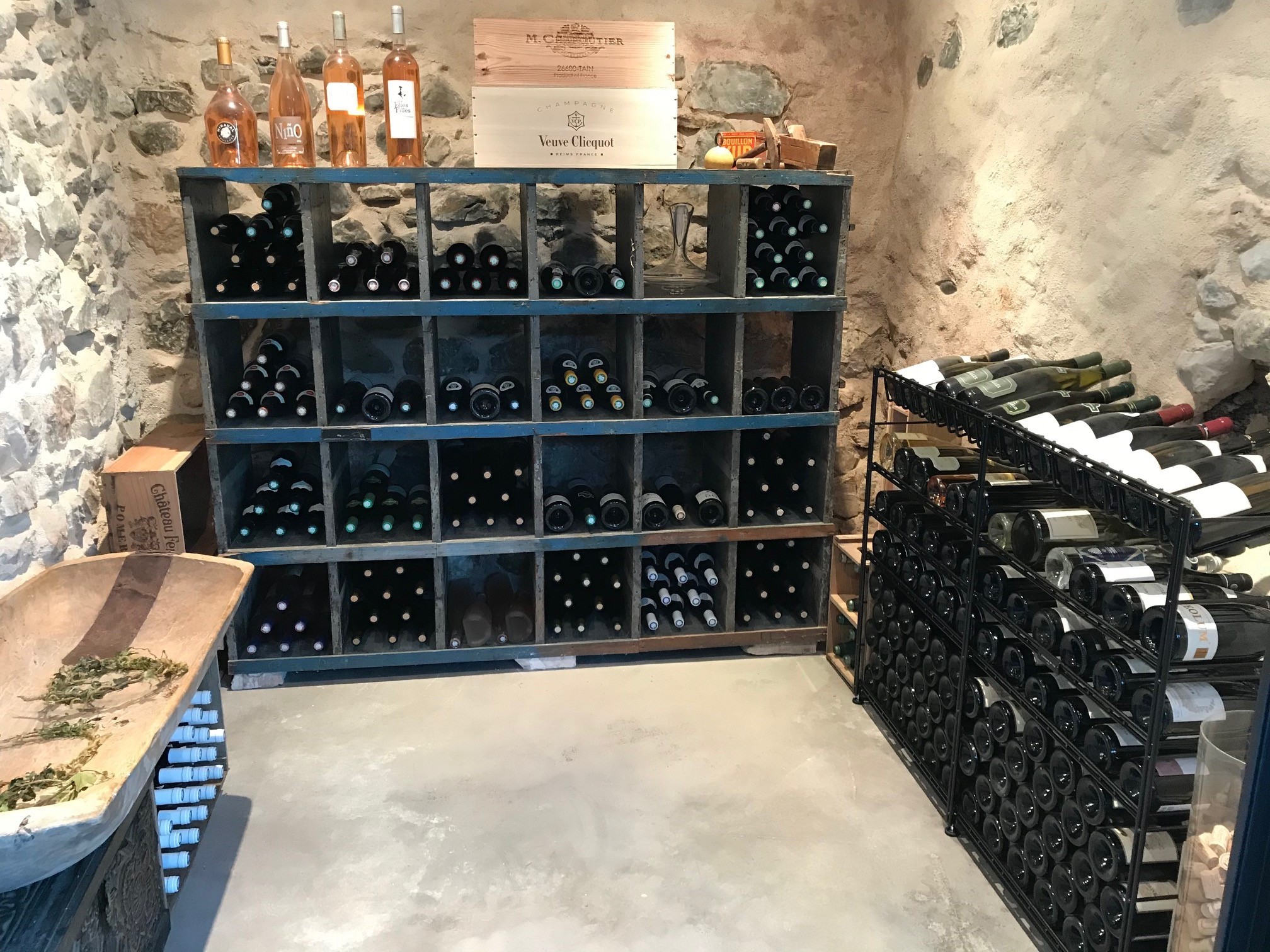
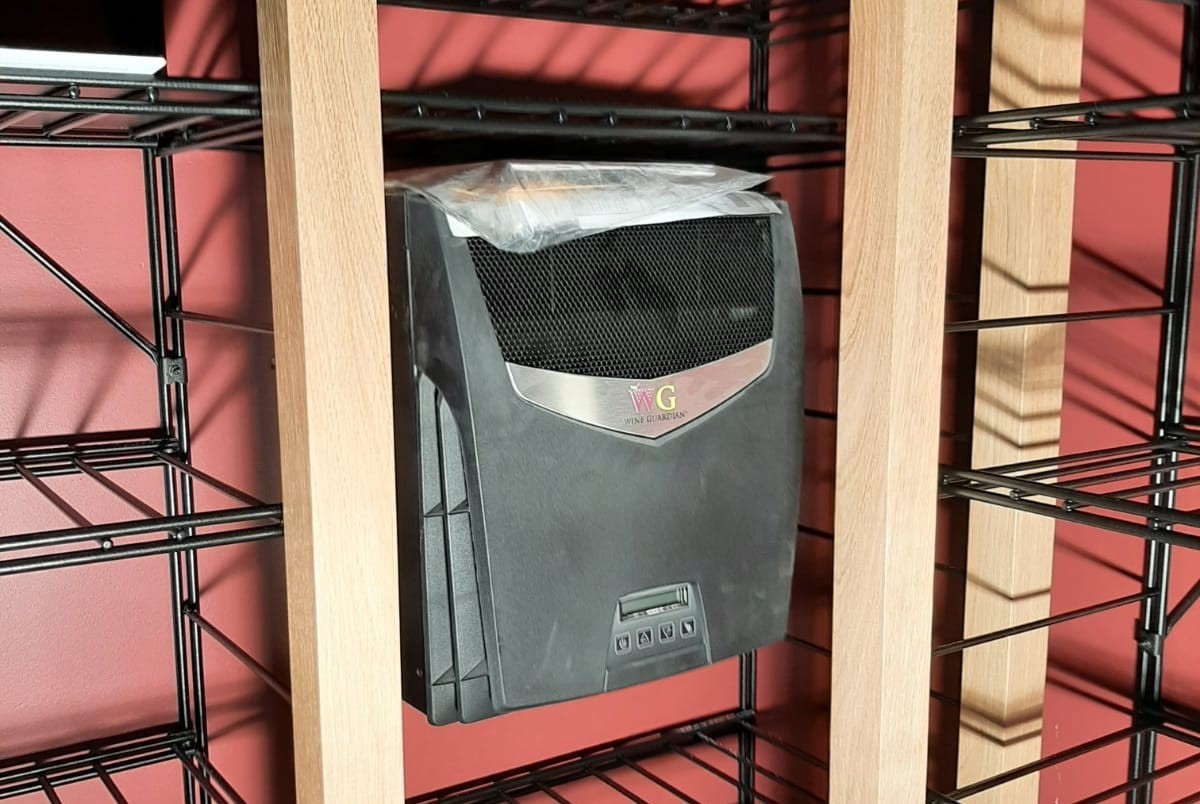
The most effective way to regulate humidity and temperature levels though, is with a wine cellar air-conditioner, such as Wine Guardian, that is connected to your air ducts or ventilation system. Avoid using fans or anything that blows air, because wine bottles are sensitive to draughts and sudden changes in temperature.
Finally, if the humidity is coming from the walls, floor or ceiling, you may need to carry out some minor insulation and damp-proofing work. We recommend calling on an expert in wine interior design because bottles are particularly sensitive to disturbances such as vibrations, dust or falls! Of course, any leaks or water infiltrations in the building need to be dealt with first and fixed.
What Is the Best Solution to Dehumidify a Wine Cellar?
There are two types of solutions: temporary ones and permanent humidity control ones.
- In the event of an emergency or a temporary excess of humidity, a dehumidifier or moisture absorber is ideal. It will enable you to remove the excess moisture from the air and absorb the humidity. However, it is not suitable for more serious or persistent humidity problems, because it does not treat the cause.
- To maintain optimal humidity levels for your still and sparkling wine collection, you may need to take further action. An aeration, ventilation or air-conditioning system, adapted to wine cellars, is ideal for purifying the air and eliminating excess moisture in the long-term.
- You can carry out insulation work, add waterproof plaster to the walls and a layer of gravel or river salt on the floor, to prevent water damage and excess humidity, and protect your wine collection from external water infiltrations.
What Is a Moisture Absorber?
Moisture absorbers usually come in the form of trays containing salt crystals or other mineral salts that are known to naturally absorb moisture in the air. Moisture absorption is the condensation of the water captured in the air into a container. It is a temporary solution to dehumidify an indoor space, with the benefits of operating autonomously, without being plugged in, and without any noise or vibrations.
What Is an Air Dehumidifier?
Dehumidifiers capture the moisture in the air, like moisture absorbers, using a motorised suction and ventilation system. Once the machine has sucked the air in, several different dehumidification mechanisms may come into play.
A condensation dehumidifier cools the air to condense the water, then warms it up and releases the dehumidified air. An adsorption dehumidifier dries and dehydrates the humid air, before releasing it back into the room in the form of dry air. A desiccant (or chemical) dehumidifier uses a specific type of salt to collect absorb the moisture in the air, before releasing it again. It can be compared to an electric moisture absorber.
Whatever kind of dehumidifier you choose, remember that it is a temporary but useful solution to quickly reduce humidity levels in a wine cellar. Its effectiveness is limited. It cannot replace a real aeration and ventilation system. But if you do decide to use a dehumidifier, we recommend choosing a model that produces little or no vibrations or draught, to preserve the calm environment that old bottles of wine need to enhance their aromas.
What Is a Wine Cellar Air-Conditioner?
A wine cellar air-conditioner is a reliable, effective and sustainable tool to ventilate your space with clean and dry air, at the right temperature. With some specialised devices, such as the Wine Guardian air-conditioners, you can carefully control, adjust and regulate the temperature and humidity levels. We recommend this solution, connected to the building’s air ducts, for wine merchants, sommeliers, oenophiles and collectors.
How to Humidify a Wine Storage Space When it Is too Dry
Be careful not to take overly drastic anti-humidity measures, or you may end up with the opposite problem… excessively dry air! In this case, a humidifier can moisten the air and stop it drying out too much. You can also place a temporary bucket of water or a wet towel in the room (or several for a large cellar). But make sure to use clean, odourless water to avoid bad smells or mould.
Do not have an account yet?
